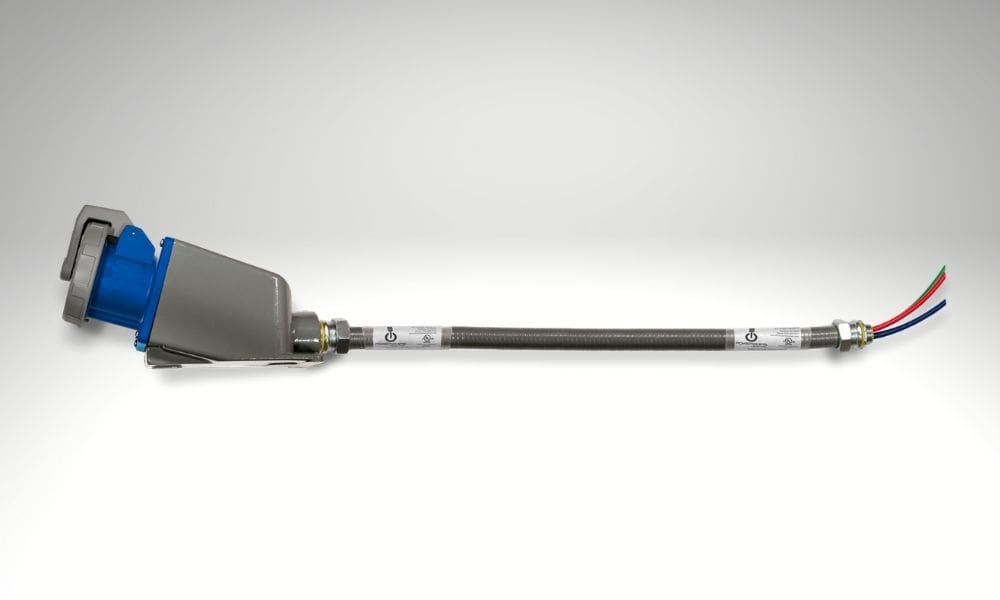
We’ve discussed the International Electrotechnical Commission and its importance within the industry. This commission helps classify different power cords by factors such as voltage, grounded/ungrounded wires, and plug shapes.
However, one feature of power whips everyone should consider is the color. This aspect of classifying is critical as sockets across the globe come in many different shapes and sizes; using the wrong cable in a specific socket may severely harm hardware. Here is a guide on the color-coding conventions for power whips and additional information on their functions.
Need for Color Coding
We touched on it briefly, but the need for color coding conventions among power whips is extremely important for the industry as a whole. IEC 60309 is the worldwide standard for plugs, sockets, outlets, and couplers in industrious settings.
Furthermore, the standard allows for a maximum voltage of 1000 V DC/AC, a maximum current of 800 A, and a maximum frequency of 500Hz. Additionally, the required ambient temperature should range from -25 degrees Celsius to 40 degrees Celsius.
Basically, this standard ensures that the power whips you use for hardware are secure. Additionally, this safeguards the integrity of your hardware.
While the names and standard of power whips are important ways to classify them, understanding what color is associated with the cable and its important features is simpler. Colors are simpler to memorize than names, making wire color coding a faster, more manageable method for novice technicians and data center managers. Using a color-coding system over names makes this information more readily available to working professionals.
Conventions
So, what exactly are the color coding conventions of IEC 60309 power cords? These are the universal color codes and their most common uses:
- Yellow – rated voltage 100-130V; 125V single/split-phase AC power
- Orange – rated voltage 125V/250V; 250V single/split-phase AC power
- Blue – rated voltage 200-250V; 250V single/split-phase AC power
- Gray – rated voltage 277V; 277V Series II current ratings single-phase AC power
- Red – rated voltage 380-480V; 400V 3-phase AC power
- Black – rated voltage 500-690V; 500V for marine vessels.
There are other, less typical colors like green that are most commonly used for aircraft power—quite obviously, you don’t want to mix that cord up with the one that’s best for your needs. Use this color system to purchase the most practical power whip accurately.
Which Is Best for You?
The numbers associated with various colors can quickly get confusing, so let’s dive into which color code power cords are best for your needs. Yellow is most commonly used for construction sites and lowers the risk of spill-over and electric shock. Additionally, the bright color makes it more visible and prevents accidental trips that could be hazardous to workers. Blue cords typically feature weather-proofed coverings for outside industrious work. Red is primarily implanted for three-phase, portable equipment.
It’s also important to consider the distinction between hot and neutral wires for electrical safety. In North America, black wires are always hot in a 240V system and red wires are the second hot; white and gray are typically neutral; and green or bare wires are the ground. Understanding these colors ensures you have an efficient power supply for your data center, reducing the risks of power failure from overloading and wasted energy from inefficiency. Consider the needs of your equipment or hardware and use the color conventions to adequately choose the best power whip.
By understanding the color coding conventions for power whips, you’ll ensure your business receives the most practical power without damaging equipment or hardware. If you have further questions about this system, please get in touch with us at PowerWhips by calling (262) 966-3741 or filling out the form on our Contact Page, and we’ll be happy to assist you and your company!
